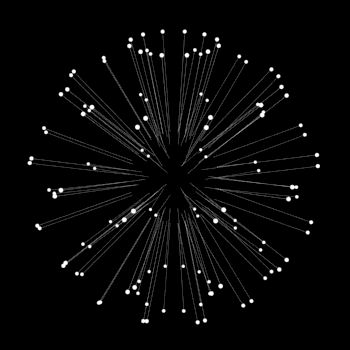A regular polygon can be divided into a finite number of triangles the sum of whose area is the area of the polygon. If we do the same with a circle of radius #r#, treating it as a polygon with #oo# sides, does that mean #oo xx 0 = 2pir^2# ?
2 Answers
No
Explanation:
First off, you got the area of the circle right, and comparing it to the area of the regular polygon, but the area of the polygon is not
A regular polygon can be split up into isoceles triangles, where the number of isosceles triangles equals the number of sides of the polygon.
(For a circle with a radius of 1 unit,
We know that for small values of
So:
A visual proof that uses the angle instead of a number of whole triangles can be found (using degrees) here, or with radians here
No, but...
Explanation:
Using transfinite and infinitesimal arithmetic...
If you divide the circle into
#1/2 xx "base" xx "height" = 1/2 * (2pir)/omega * r + O(1/omega^2) = (pir^2)/omega+O(1/omega^2)#
So the total area of the circle is:
#omega * ((pir^2)/omega+O(1/omega^2)) = pir^2+O(1/omega)#
the standard part of which is
Of course a more modest approximation is given with a finite number of segments...



